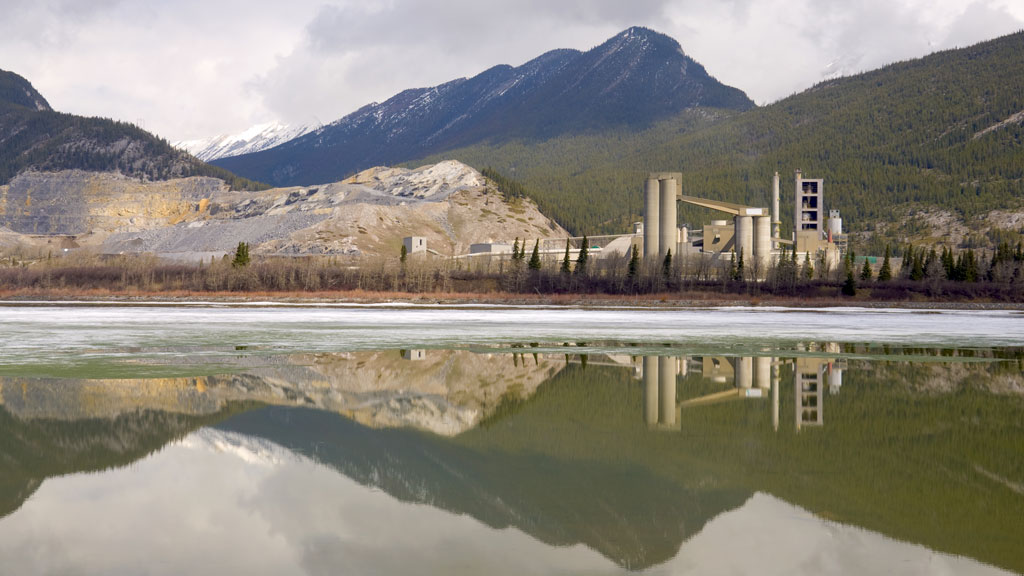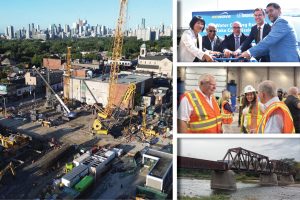Aggregate producers in Alberta are breathing a sigh of relief after the United Conservative Party and opposition NDP managed to put aside their political differences and quickly pushed through legislation aimed at restoring normalcy to the gravel and sand industry in the province.
The legislation, known as Bill 31, creates certainty for producers by clarifying how minerals and pits are defined in provincial legislation and how sand operations are regulated.
Many producers had been in limbo since the Alberta Court of Appeal ruled that sand is a mineral under the Environmental Protection and Enhancement Act (EPEA) which meant there was a strong possibility that gravel pits would be considered quarries instead of having their own classification.
Quarries producing over 45,000 tonnes each year are required to complete an Environmental Impact Assessment (EIA), which are costly and time-consuming and typically reserved for large-scale projects.
The court ruling was made in relation to a Big Molly frac sand operation in Lac Ste. Anne County.
The uncertainty created by the ruling resulted in a backlog of about 600 applications being put on hold.
“We didn’t really have any concerns before that but the court just interpreted the legislation different than it had been in the past and all of a sudden it created a bunch of issues for our industry,” says Joe Hustler, president of the Alberta Sand and Gravel Association (ASGA), which represents more than 200 aggregate producers, consultants, associates and other stakeholders. “It was about 25 years that this had been in place but somebody finally challenged it.”
When the ruling came down, applications from producers were put on hold by municipalities until it was sorted. The situation wasn’t helped by the fact Alberta already had a significant backlog of applications. Not all were for gravel pits. Some were for access roads and related activities.
Such applications, depending on the circumstances, can take four to seven years to receive the necessary approvals.
The government had been trying to tackle the backlog, but it had steadily been growing over the years and the delay due to the court ruling only made the situation worse, Hustler adds.
In late July, however, the Alberta government passed Bill 31 which clarified that gravel pits have their own classification and are not considered quarries. Since then, applications have been moving again.
Hustler said producers had been concerned because the backlog was growing and they weren’t sure what was going to happen, but they are pleased that the parties managed to pass a law.
Sand and gravel pits typically don’t require an EIA because disturbances caused by the work are fairly standard.
“The impacts are well-known and there’s not generally any kind of pollution or environmental concerns as far as contaminating groundwater or even, for that matter, air quality is not affected by sand and gravel pits. So, it was quite a departure from the existing regulatory pathway.”
The legislation makes it clear that sand and gravel are essentially surface material. That’s an important issue because a landowner owns the surface material.
Hustler says the government was quick to act when it was presented with recommendations to remedy the situation from the ASGA and legislation was spurred in just six weeks – an unprecedented achievement. He says credit must be given to both political parties for supporting the legislation.
“They both recognized that, despite their other differences, this had a lot of unintended consequences that needed to be corrected. It was a bit bipartisan that way. We don’t try to get too political as an organization. We represent our members and try to get things done right,” he explains.
“It was quite a compact process because the original court decision was May 6 when the appeals court came out with a decision. We pretty much got everything we asked for. What this was intended to do was correct the interpretation just so that we could get some applications approved again.”
Had government not dealt with the issue, producers would have had to apply as quarries which means they would have had to do EIAs. That, says Hustler, would have been hard on small operators.
The ASGA had already been concerned about the regulatory process and time it takes the province to review permit applications from producers for development of new extraction areas.
A report issued by the association’s land and environment committee indicated the situation is causing problems because companies are unsure of what the rules are and there are also inconsistencies between regions.
Hustler says the government is going through a review to eliminate some of the inconsistencies and standardize the processes. Government is developing a new web-based portal to help reduce paperwork and speed up the system and hopes to turn on the system in early 2021.











I take objection to the falsehoods being propagated by the Journal of Commerce. These statements by Joe Hustler are proven false in countless studies and professional hydrology reports: “The impacts are well-known and there’s not generally any kind of pollution or environmental concerns as far as contaminating groundwater or even, for that matter, air quality is not affected by sand and gravel pits. So, it was quite a departure from the existing regulatory pathway.” The ASGA has a responsibility to the 25% of the population who are completely dependent on groundwater for their fresh water supply; as well as a far reaching responsibility to every community they operate in that they will “get this valuable resource out of the ground without devastating the watershed”. Making these false claims of harmlessness does not imply that Aggregate Industry can be trusted to act with honesty and integrity when removing landscapes, altering drainage patterns, considering neighboring wells, or determining inflow needs for near by lakes and streams. “where there is good gravel, there is good water; and vice versa”.